Glanum - Monumental Center
Glanum: Roman village in southern France, modern St.Rémy-de-Provence.
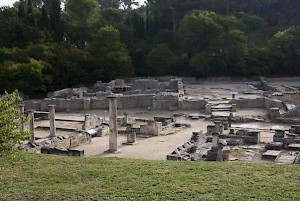
During the first years of the reign of the emperor Augustus (r. 31 BCE - 14 CE), Glanum received the rank of colonia and becane soon an important center of Roman civilization in Gaul. The city received a monumental center that can be visited.
The forum, the Roman public square, was closed off by two porticos. The curia is a room that was used as an assembly hall for local officials in the Roman period; another room served as a tribunal. The basilica is a vast administrative building with 24 square foundation pillars still visible. The Tuscan temple dates from the Hellenistic period. The dromos well owes its name to the stair entranceway, leading to the water. Sulla's house is named after an inscription on a mosaic which decorated one of the rooms. Hercules' shrine is dedicated to the mythological Greek and Roman demi-god, a symbol of physical strength. Numerous votive altars were found in front of this shrine.
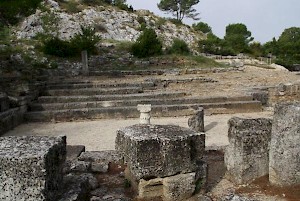
The wine smoking rooms, dating from the Roman period, were used to smoke and thus better preserve wine. The local houses are part of the Gaulish village which pre-dated the building of monuments in the town.
The ramparts are comprised of massive rectangular stone blocks. In the center, a cart gate and pedestrian gate flanked by a tower gave access to the shrine. The exedra, a sort of recess with benches, was built in the 2nd century BCE and was preserved during the Roman period. The Doric portico at the entrance of the shrine was probably used for purifying ablutions by the faithful on their way to the spring. The bouleuterion was the assembly hall for dignitaries during the Hellenistic period. It is terraced on three sides and originally had a central altar. The triumphal fountain dates from the Roman period.
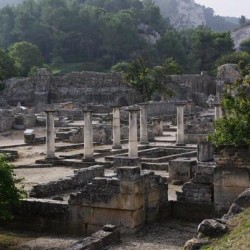 Glanum, General view |
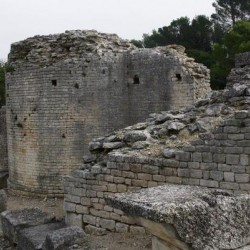 Glanum, Curia |
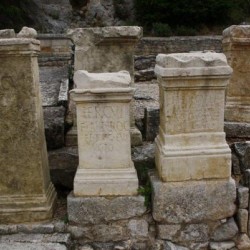 Glanum, Shrine of Hercules, Altars |
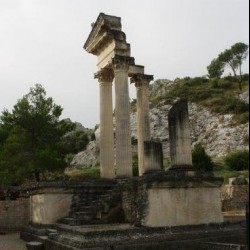 Glanum, Imperial temple |